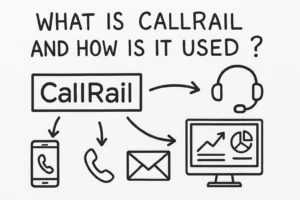✅ What We’ll Cover in This Article: The Key Website Element
- Why trust-building content is the single most overlooked website element
- How buyer-led articles change traffic, conversions, and sales conversations
- Practical examples of what to publish (and what not to)
- ROI math: how a single article can impact pipeline and cost of acquisition
- How to get started without overwhelming your team
Why this question matters
You may have a fast, polished website. It loads quickly, looks professional, and your services are clearly listed. But here’s the problem: if your site doesn’t answer the real questions your buyers are asking every day, it’s missing the one thing that actually drives pipeline—trust-building content.
Most B2B websites are heavy on “what we sell” and light on “what you need to know before you buy.” That’s why even good-looking sites often underperform.
What’s the missing ingredient?
The missing element is They Ask, You Answer content—buyer-focused articles that address the exact questions prospects type into Google or ask your sales team.
This isn’t fluff blogging or keyword stuffing. It’s structured, practical content that builds trust by answering:
- “How much does this service cost, really?”
- “What are the tradeoffs between option A and option B?”
- “What problems should I expect if I go this route?”
- “Which is the right fit for a business like mine?”
Without content like this, your site is just a digital brochure. With it, your site becomes a 24/7 Advisor that builds trust before a sales call ever happens.
Why most websites don’t have it
Three common reasons:
- Fear of transparency. Leaders worry that if they publish pricing ranges or tradeoffs, they’ll scare buyers off. The truth? Buyers are already researching. If you don’t give them clarity, a competitor will.
- Confusing priorities. Many teams treat blogs as a marketing checkbox rather than a strategic sales tool. The result is “content” that doesn’t answer real buyer questions.
- Ownership gaps. Websites are often managed by marketing, but the best insights come from sales and service teams who hear buyer questions daily.
What happens when you fix it
Let’s imagine a hypothetical 75-employee firm considering a managed IT provider. The CEO types “managed IT pricing for SMBs” into Google.
- Scenario A (no content): Your site lists services but avoids pricing. The CEO bounces, assuming you’re hiding something.
- Scenario B (with content): Your site has an article titled “How Managed IT Services Are Priced: What SMB Leaders Should Know.” It explains per-user vs per-device models, typical ranges, and what factors increase cost. The CEO feels informed, fills out your form, and references your article on the first call.
The difference? Trust built before you even spoke.
Doceo Pro Tip
If you don’t publish the answers, your sales team will repeat them one-to-one—hundreds of times a year. Document them once and let your website do the heavy lifting.
ROI impact: a simple math check
Suppose one article drives 200 qualified visitors a month. If even 2% of them convert into a form fill, that’s 4 new leads monthly. Over a year, that’s 48 opportunities.
- Average cost of producing a strong article: ~$600–$1,000 (time, editing, graphics).
- Value of one new customer contract: say $20,000 annually (conservative mid-market IT agreement).
Even if only one of those 48 leads converts, the ROI is 20x or more.
What to publish first
Start with the Big 5 question types every buyer asks :
- Cost and pricing — “What does [service] cost?”
- Problems and drawbacks — “What are the downsides of [solution]?”
- Comparisons and alternatives — “Is [solution] better than [other option]?”
- Best of/reviews — “Which [service/product] is best for [situation]?”
- How-to/process — “What does onboarding or setup look like?”
Doceo Pro Tip
Don’t overcomplicate. Your first 10–12 articles should be plain-spoken, practical, and focused on questions your sales team hears weekly. That’s how you build momentum.
FAQ
Isn’t this just giving away too much information?
No. Buyers don’t expect secrets—they expect honesty. Sharing ranges and tradeoffs positions you as trustworthy, not as a risk.
What if my competitors see our content?
They already know your pricing ballparks and service model. Your buyers don’t. Publish for them.
How often should we publish?
Consistency matters more than volume. Even two high-quality articles per month can compound traffic and conversions over time.
Should these articles replace product pages?
No. Keep product/service pages clean and scannable. Use articles for education and context, then link between them.
Who should write this content?
Ideally, marketing captures the first draft, but your Advisors and sales team provide the questions, answers, and proof points.
Final thought
If your website isn’t answering the real questions buyers ask, it’s not doing its job. The single most important thing your site needs—likely more than another redesign—is honest, transparent, buyer-led content.
👋 Have questions or want to talk through your options? We’re here to help.
Talk to a Doceo Marketing Advisor Today: Let's Talk





